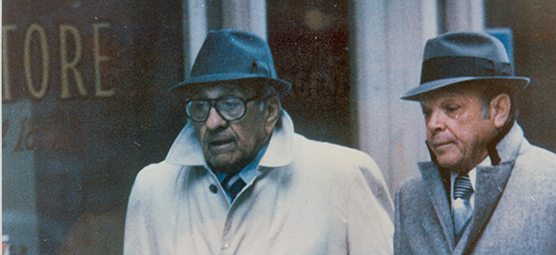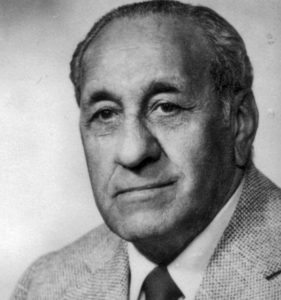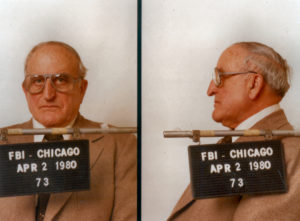Boosting the boss
Forty years ago this month, Chicago Outfit boss Tony Accardo unleashed fury on those responsible for an audacious burglary


Feeling disrespected and unappreciated, a rogue Chicago Outfit burglary crew robbed the suburban mansion of longtime crime boss Tony “Big Tuna” Accardo. It happened 40 years ago this month, in the early morning hours of January 6, 1978.
The fallout was swift and savage. A protégé of Prohibition-era boss Al Capone, Accardo ordered a combined 10 revenge slayings and cover-up murders tied to the daring predawn break-in.
The price for the misdeed would be paid in blood. Bodies began dropping within days.
Accardo was vacationing in California at the time of the robbery. He had recently instructed a burglary crew led by associate John Mendell to return a bundle of cash, gold and diamonds acquired in a jewelry store heist pulled off in the days before Christmas 1977. The store was owned by a friend of Accardo — a Jewish bookie paying the Big Tuna protection money. Mendell decided to show his extreme displeasure by brazenly robbing the ritzy, well-manicured estate built by the legendary Outfit kingpin more than a decade earlier.
It proved an ill-conceived endeavor, and it didn’t take long for Accardo to seek his proverbial pound of flesh.
An expert at deactivating complex alarm systems, known as the most skilled “bypass man” in the whole Outfit, Mendell was the first to go, disappearing on January 15. He was found, weeks later, in the trunk of his car, stabbed and strangled to death.
Five days after Mendell went missing, his second-in-charge, Bernard “Buddy” Ryan, was discovered dead behind the wheel of his car with four bullet holes in the back of his head. Ryan’s right-hand man, Stevie Garcia, made it until February 2 when he popped up as “trunk music” at the Sheraton Hotel next to O’Hare International Airport.
The hit parade continued and got more brutal.
On February 4, Vince Moretti, the marked burglary crew’s fence for all of its stolen property, along with a small-time crook friend of his named Don Renno, were lured to a Cicero, Illinois, bar and beaten and stomped to death. Renno had nothing to do with the Accardo robbery; he simply happened to be in the wrong place at the wrong time.
The double homicide came to be referred to as the “Strangers in the Night Murders” because of the Johnny Mathis song playing on the jukebox as Moretti and Renno were slaughtered by an Outfit hit team. Moretti, a former police officer, had been seen wearing Accardo’s gold cufflinks around town in the days before he was killed.
There was a two-month reprieve from the bloodshed before the final two members of Mendell’s crew, Bobby Hertogs and Johnny McDonald, met their own gruesome fate. Hertogs was found in

the trunk of his car on April 6. He had been badly beaten and had his throat slit. McDonald was shot in the back of the head, his body dumped in an alley on April 14.
In order to cover his tracks and cut ties from the purge he set in motion, Accardo turned his wrath toward his own inner circle and the execution squad he had dispatched to do his bidding. In October, Accardo’s houseboy, native Sicilian Mike Volpe, vanished weeks after testifying in front of a grand jury investigating the slayings linked to the January break-in. Accardo was famously protective of his beloved River Forest mansion, having even bumped off the architect who designed it out of suspicion that he had shared the blueprints with the FBI.
Months later, Anthony “Little Tony” Borsellino and Gerald “Jerry the Dinger” Carusiello were slain with bullets to the back of the head. Borselino and Carusiello had participated in the epic bloodletting of the burglary crew that dared to boost the boss. Borselino was a member of the notorious westside “Wild Bunch,” a group of grizzled Cicero enforcers tasked with the Outfit’s most difficult jobs. Carusiello was a driver and bodyguard for Accardo’s street boss, Joseph “Joey Doves” Aiuppa.
Nobody was ever arrested for any of the murders. Volpe’s eyeglasses were recovered from a safe inside the residence during a raid years later, but his body has never been unearthed. The Big Tuna himself died peacefully in 1992, having served close to a half-century at the helm of the Outfit and never doing any significant time behind bars.
Scott M. Burnstein, a journalist and true-crime historian, is the author of five books on organized crime. He founded and runs The Gangster Report (www.gangsterreport.com) newsmagazine website. He writes daily for The Oakland Press in Metro Detroit and focuses on Mob activity in Detroit, Chicago, Philadelphia and New England.
Feedback or questions? Email blog@themobmuseum.org





